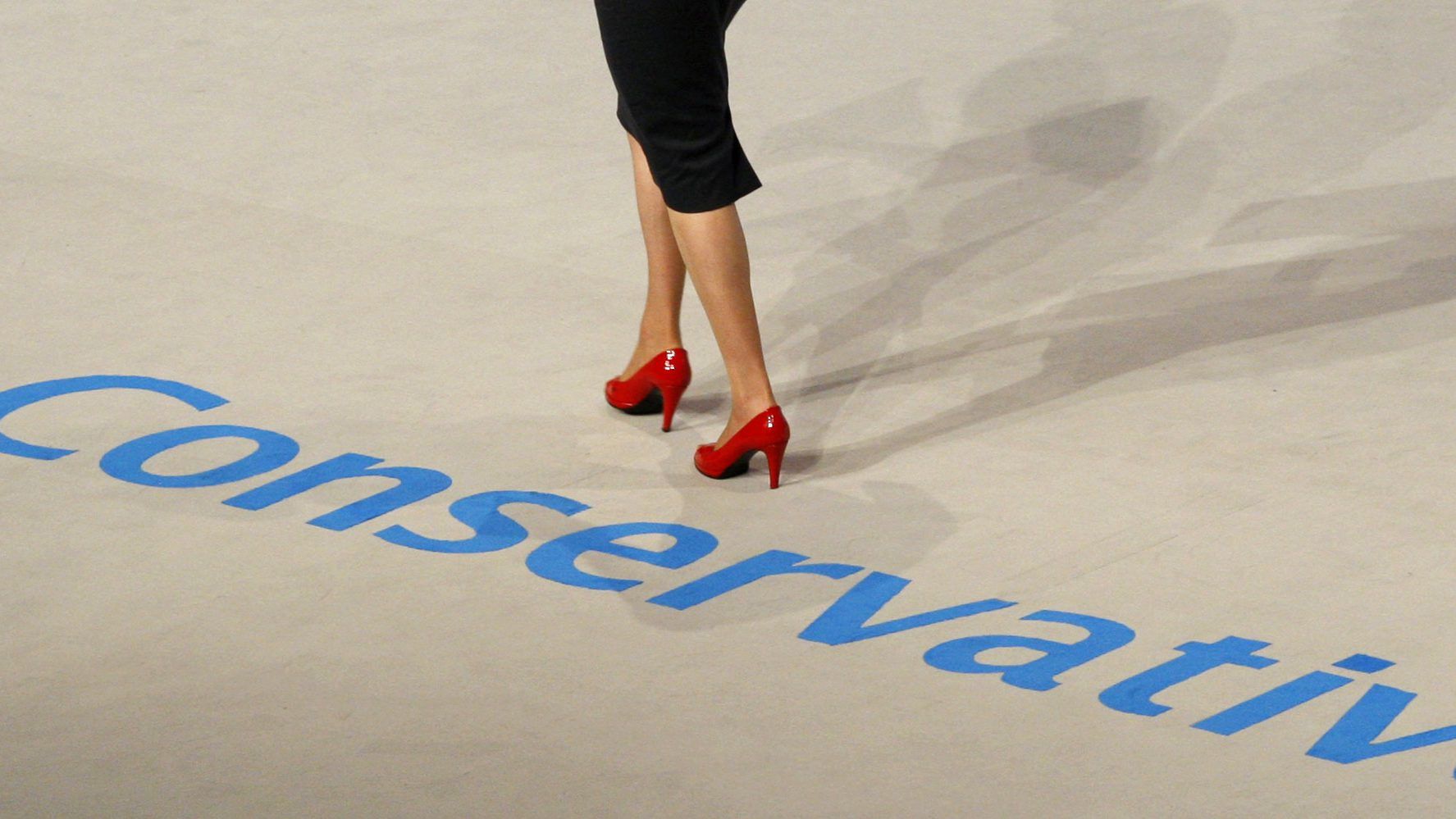Propelled forward by leftists, the current fourth wave of feminism in America, focusing on women’s experiences with sexual violence through social media outlets, requires a rebranding based on conservatism for it to reach not only rightist American women, but women across the globe.
With the hashtag #UsToo, a larger number of conservative women need to advocate for a feminism that is inclusive to rightists and women worldwide, one that is rooted in personal responsibility and less supportive of misandristic extremism.
In 2006, Tarana Burke first started the #MeToo movement, now supported and followed by thousands of women, to help survivors of sexual violence, especially for women of color, deal with the trauma.
However, what began as a movement motivated to help women of color cope with their experiences with sexual violence has now been taken over by white, liberal female feminists who have isolated not only women of color, but women who have more conservative political beliefs.
With the advent of #UsToo, conservative women have proffered a new movement in response to white liberal women’s domineering hold over #MeToo.
The conservative feminist rebranding needs to start with the Women’s March. How can conservative women become a part of a campaign which advocates for abortion rights, economic liberalism and amnesty for undocumented immigrants? The short answer: They can’t.
In response to President Donald Trump’s victory against Democratic presidential nominee Hillary Clinton, Hawaiian local Teresa created a Facebook event and invited friends to march in Washington in protest. Thousands of women gathered on Washington with the unifying principle that “Women’s Rights are Human Rights and Human Rights are Women’s Rights.”
However, now a national and international event, the Women’s March campaign has expanded to include several new unifying principles, many of which clearly advance a liberal political agenda.
That’s not all — the campaign, in the wake of the Stoneman Douglas school shooting, is even tracking school walkouts across America. For a campaign that supports women’s rights, based on its “unifying principles,” the Women’s March alienates conservative women, missing the opportunity to create a campaign that transcends political leanings and places women front and center.
Kelsey Harkness, staff writer for The Daily Signal, recently evaluated the Women’s March as a “self-serving entity that excludes not just women who disagree with the organizers politically, but women who are really in need of our help.”
Focusing largely on allegations made against President Trump, women marched with signs reading “Keep Your Politics Off My Pussy,” which only turns what should be a march recognizing survivors of sexual violence and empowering women into an anti-Trump protest.
Being a conservative woman from Canada, the most appalling thing I saw to emerge from the now infamous Women’s Marches was women dressed up as vaginas.
Embodying female genitalia only sexualizes women further — especially given the current hookup culture in which millennials freely engage in one-night stands and quixotic flings — as being a woman becomes synonymous with having a vagina, rather than also emphasizing a different part of women’s anatomies such as their brains, which both men and women have.
Not as tantalizing, right? Wrong. A word to these women: Rather than representing you as more than just your body, dressing up as a vagina only transforms you into a walking, talking, sexualized object.
The broader #MeToo movement should follow in the footsteps of #UsToo, which incorporates women and men of color as well as right-leaning American women and women internationally experiencing nefarious sexual violence attacks.
While women are dressing up as vaginas in America, only last week, an Indian woman in a village near South Dinajpur was brutally gang-raped by two local men who sexually abused her until her intestines spilled forward, in the end, leaving her to die alone on the street.
A Syrian woman Zahira (not her real name), was arrested at her workplace in a suburb in Damascus and regularly brutally beaten, over the course of five months, with a hose pipe and even electrocuted.
At one point, she was tied upside down for an hour while a prison guard hit her face repeatedly. When being interrogated, she says she was sexually penetrated in “every body cavity,” being filmed by a soldier who threatened to show her family and community.
Harkness, in the CPAC panel “#UsToo: Left behind by the Left,” discussed a hashtag more inclusive than #MeToo: #UsToo. “It’s about an inclusive version of feminism, where I’m not just worrying about myself as a woman here in the United States. I’m worried about the women across the seas who are facing issues of female genital mutilation. And those women are never talked about.”
#UsToo gives women and men of color a voice — much as the second wave of feminism in America found that women of color redefined their own feminism as different than that of white women.
Early this February, Iranian women returned to the conversation over women’s rights and mandatory hijabs in Iran as one woman, peacefully, removed her hijab on a busy Tehran street. Rather than voicing their support, the Women’s March campaign tweeted their decision to sell hijabs in the United States, claiming they embraced diversity.
The current feminist movement needs conservative women to offer a type of feminism based on personal responsibility, not just for American women leaning left or right, but for women around the world who face tangible threats to their physical and mental well-being.
Many conservative women, myself included, reject a liberal feminism which oftentimes purports a misandristic and pro-choice extremism.
In reaction to conservative women rejecting #MeToo’s brand of feminism, liberal feminists have called them out for being anti-woman and uneducated on the social mores of current society. This is simply not the case.
Reflecting carefully on the leftist feminist movement, conservative women are anti-victimization, with the exception of women that have experienced sexual violence such as rape or faced real crimes against humanity such as torture, assault and sexual mutilation.
The current feminist movement, albeit expectedly, presents women as victims of sexual violence, even though assuming and embodying the role of victim places these women in a state of precarity, unable to move forward from their traumatic experiences and being defined by them.
Women who have experienced sexual violence should lean on the support of family, friends and other women with shared experiences to move forward and become stronger as survivors, not victims.
For those women who haven’t experienced sexual violence, assuming the role of the victim is a belittling position to be in; these women should seek out a position of empowerment which recognizes that not all men are perpetrators of sexual violence and that men and women need to work together to combat sexual violence and rape culture.
White House Senior Advisor Kellyanne Conway, a conservative woman who does not support a liberal feminism that is misandristic and pro-choice, perhaps sums it up best: “I look at myself as a product of my choices, not a victim of my circumstances.”
The current feminist movement also creates a sort of negative representation of men as perpetrators of sexual violence — always guilty until proven innocent. Liberal media often conflates sexual harassment such as cat-calling with sexual violence. And yes, while men should convey interest in women respectfully and kindly, cat-calling is not nearly as damaging and traumatic as rape.
While it is clear that there were major grounds and evidence for the men accused of sexual violence against women, men who haven’t done anything wrong still get lumped into the same category.
It’s important to ensure that young men growing up during this time do not feel that they are the enemy: Rather, women should show men that they must be respected while at the same time treating men, who haven’t done anything wrong, with the same level of respect.
On a cautionary note, recognize a good idea when you see one. It shouldn’t matter whether a good idea came from a liberal or a conservative; if the idea is good, give credit where credit is due.
When Americans can converse together in dialogue for a unifying cause such as women’s rights and consider how the other side can strengthen such a movement, isn’t that the value, the ideal of a democratic nation?
When more conservative women can come out and share their different viewpoints on modern leftist feminism, this will also serve to moderate and create a new feminism that seeks to include voices rather than silence them.
With college campuses being more liberal now than ever, speaking up about inclusive feminism can ensure conservative women that they can actively participate in asserting their identity and values.

















